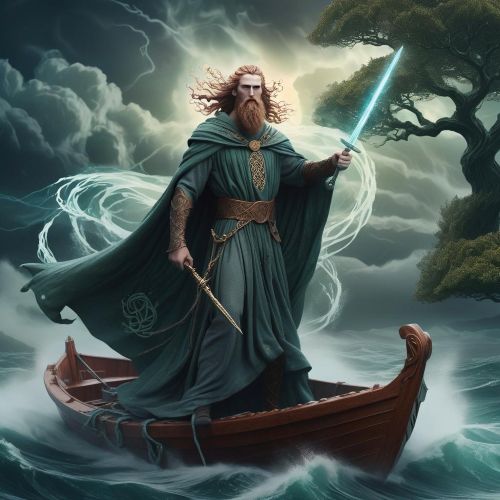Manx Mythology
Manx mythology is the rich body of legends, folklore, and spiritual beliefs that developed on the Isle of Man, an island situated in the Irish Sea between England and Ireland. Deeply influenced by both Celtic and Norse traditions, this mythology reflects the island’s unique cultural history as a crossroads of seafaring peoples. Stories passed down through generations speak of gods, spirits, fairies, and mythical creatures who were believed to inhabit the land, waters, and skies of the island. These tales not only shaped the worldview of the Manx people but also served to explain natural phenomena, teach moral lessons, and strengthen community bonds. As an oral tradition, Manx mythology has been preserved through storytelling, songs, and folklore, allowing it to remain an important part of the island’s cultural identity even today.
A central feature of Manx mythology is its connection to nature and the sea. Being an island community, the Manx people developed a deep respect for the ocean, which was both a source of sustenance and a realm of mystery and danger. Legends of sea gods, mermaids, and other aquatic beings highlight the significance of water in their spiritual worldview. The Moddey Dhoo, a supernatural black dog believed to haunt Peel Castle, is one of the island’s most famous mythical figures, said to be a harbinger of death. Another notable figure is the Buggane, a fearsome giant-like spirit known for tearing the roofs off buildings in anger. These beings reflect the balance between protection and peril that nature represented in Manx mythology, showing how myth was used to embody the unpredictable forces of the environment.
Equally important are the fairies, or “Mooinjer Veggey,” meaning the Little People, who occupy a central place in Manx folklore. They were thought to dwell in the hills, glens, and ancient burial sites, influencing the lives of those who respected or offended them. The Manx believed that fairies could bring blessings when treated kindly but could also cause harm if disrespected. Customs such as leaving offerings or avoiding certain fairy paths highlight the practical ways in which mythology shaped daily life. Folklore also preserved moral values through its stories, warning against greed, arrogance, and cruelty, while celebrating humility and kindness. In this way, Manx mythology functioned not only as entertainment but also as a guide to living in harmony with the natural and spiritual world.
In the modern era, Manx mythology remains a vibrant part of the Isle of Man’s heritage. Festivals, folklore societies, and cultural events continue to celebrate the island’s mythical past, while traditional tales are retold in literature, art, and popular culture. The mythology also contributes to tourism, with landmarks such as Peel Castle and Fairy Bridge drawing visitors eager to connect with these ancient stories. As a living tradition, Manx mythology endures not only in storytelling but also in the collective imagination of the Manx people, who take pride in their unique blend of Celtic and Norse influences. By preserving and promoting this mythology, the Isle of Man ensures that its legends, fairies, and mythical creatures remain relevant in contemporary culture, offering both locals and visitors a window into the island’s fascinating spiritual past.


